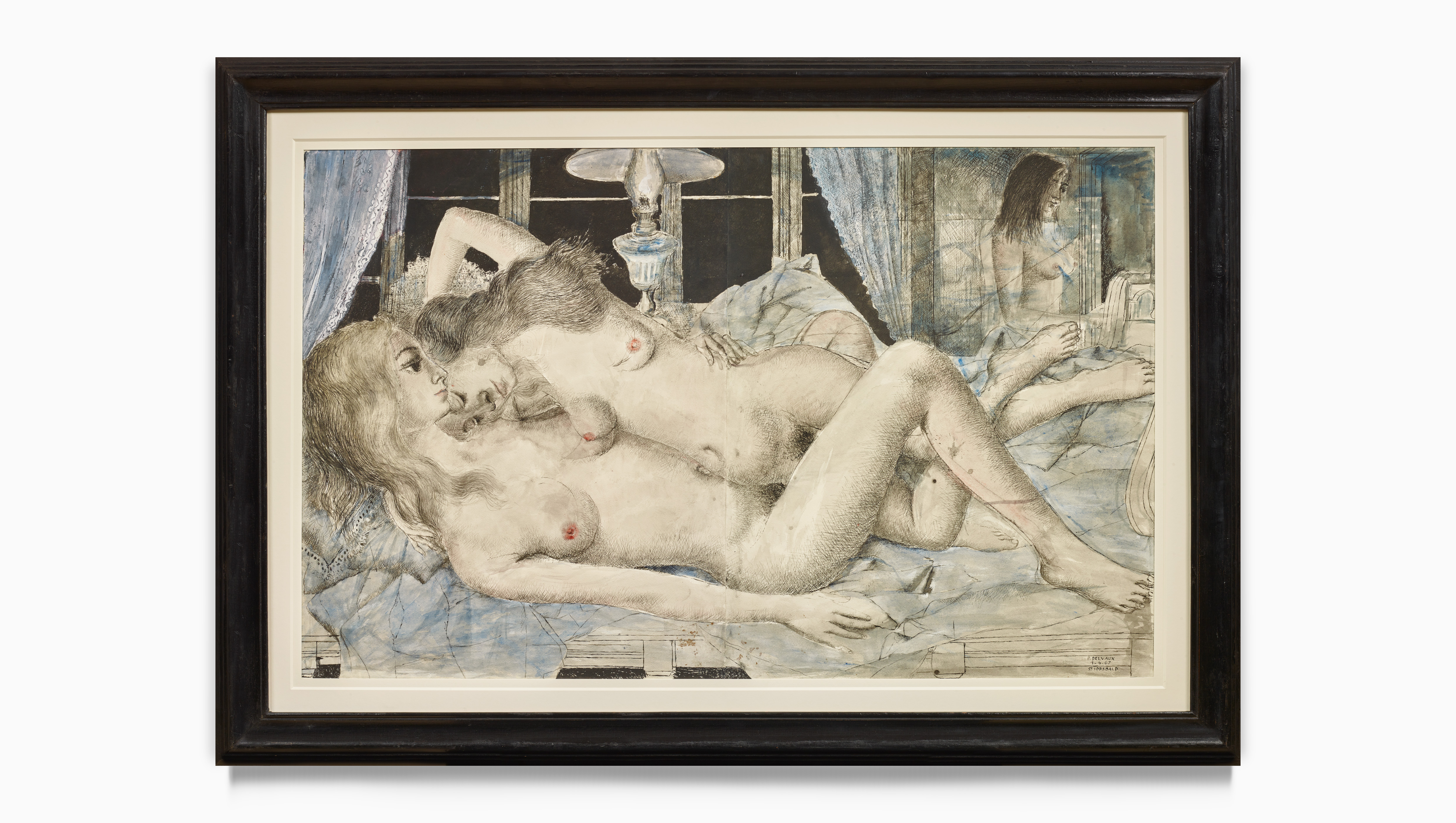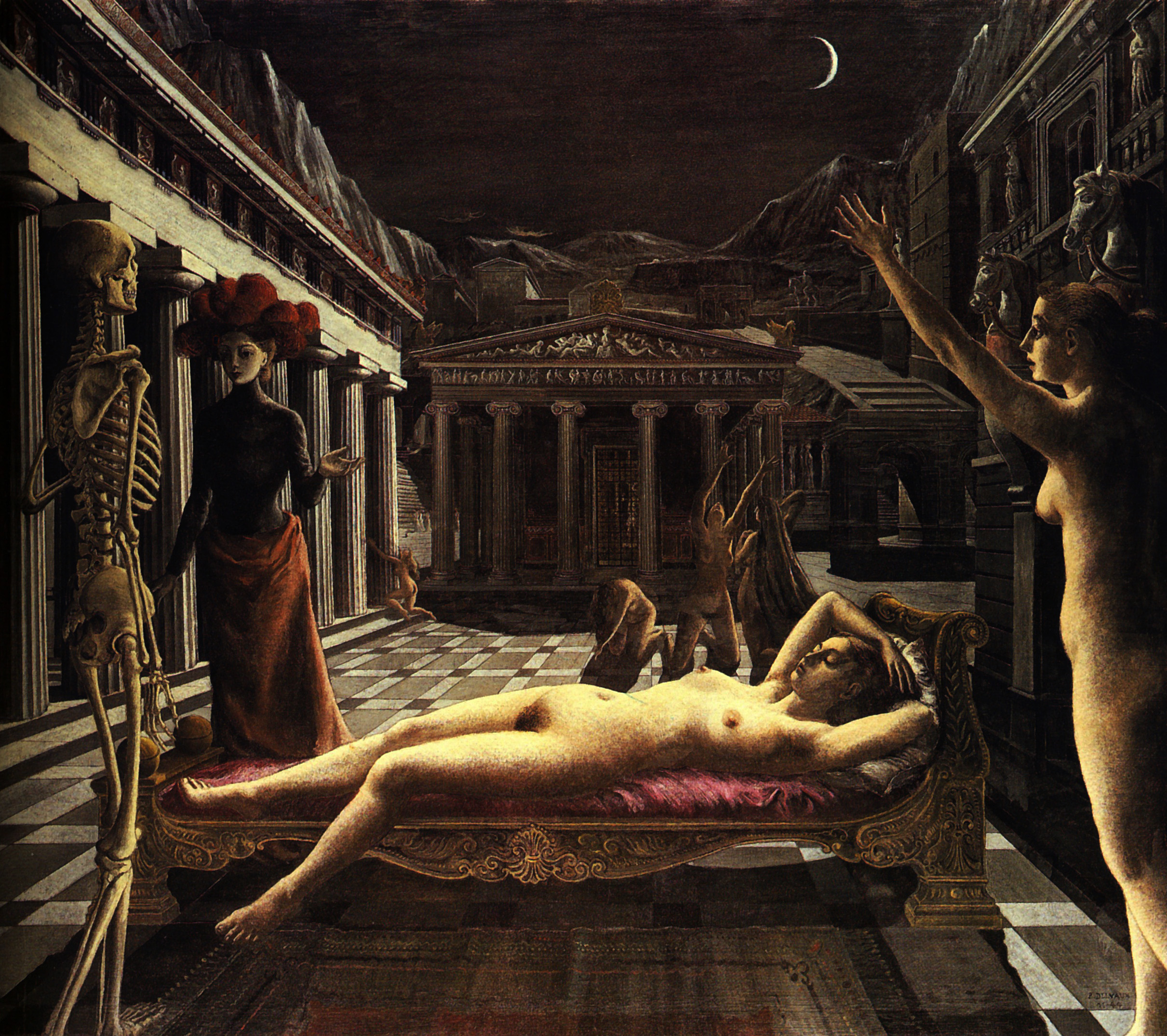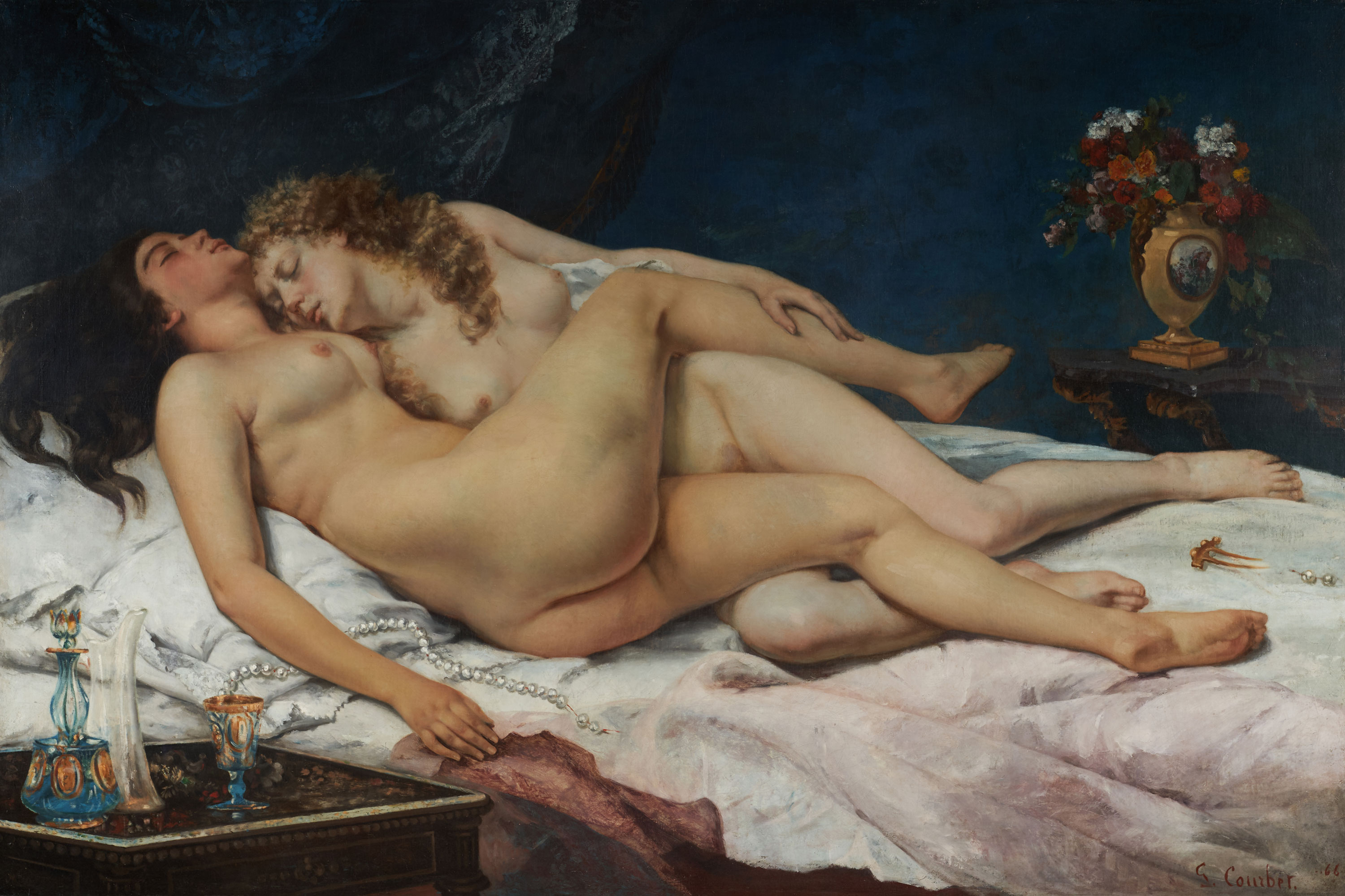Paul Delvaux (1897 – 1994)
Les deux amies, 1969
Watercolour and ink on joined papers
62,9 x 100,8 cm

Les deux amies, 1969
Watercolour and ink on joined papers
62,9 x 100,8 cm
Paul Delvaux
A master of dreams, singular and bewitching, Paul Delvaux creates a timeless universe through his unique works. Trained at the Royal Academy of Fine Arts in Brussels, Delvaux quickly established a symbolist style influenced by post-impressionism. It was not until 1934, when he discovered the work of Chirico, that Delvaux embarked on a new pursuit. At this turning point in his career, Delvaux proclaimed himself a Surrealist.
In his repertoires, we find women, often in the nude, wandering around a tightly framed setting. He references the art of Botticelli in the hieratic poses of his figures, and the suspended gestures and expressions of the works of Munch. Delvaux succeeded in capturing a moment in time, presenting us with a world that is familiar, yet enigmatic and esoteric.

Paul Delvaux | La Vénus endormie, detail | 1944 | Oil on canvas | ©Tate Britain, London

The two-register composition of Les deux amies is dominated by the intertwined female figures in the foreground. The simple lines, finely placed to create shadow and dimension, suggest the artist’s delicate hand caressing the paper and reflect the sensual embrace of the two women. The blue watercolor wash lends a phantasmagorical quality to the scene, reinforcing the hazy, dreamlike atmosphere of the interior.
In the background, a series of windows look out on a black sky contrasting with the ivory skin of the central figures. The simple lighted gas lamp suggests a night scene, but there is no other indication of place or temporality – Delvaux wishes to keep the mystery of his personal world.
The deep look in the dark eyes of one of the characters, signature of Paul Delvaux, anchors us in this universe that exists between dream and reality, fantasy and the ordinary.
Paul Delvaux
The theme of the “deux amies” (two female friends) is a recurrent motif in painting. Delvaux’s work echoes this particular painting by Gustave Courbet, which uses the same theme to create allegories of laziness and lust. Reminiscent of his Symbolist beginnings, Delvaux must have been attracted by this painting, which was exhibited at the Petit Palais in 1953. There are similarities between the positions of the bodies on the unmade bed and the deep, dark background.
Beyond the formal references, Delvaux must have been attracted by the hidden double meaning of this painting, which is often found in his own Surrealist works. His scenes present multiple levels of interpretation and encourage the viewer to read between the lines.

Gustave Courbet | Le sommeil (Les deux amies) | 1866 | Oil on canvas | Petit Palais, Paris